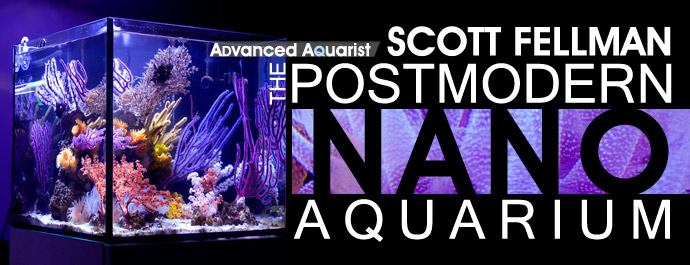
Let’s face it. It wasn’t all that many years ago that the term “nano aquarium” immediately conjured up visions of tiny, overcrowded, under-filtered fish prisons. Then, aquarium manufacturers saw a marketing opportunity and began offering small, well-equipped aquarium systems that were legitimate alternatives to the big guys. A new hobby segment was created, and the door was opened for both beginning and advanced hobbyists to experiment, play, and learn from these diminutive aquariums.
It wasn’t long before hobbyists started trying all sorts of new things: keeping Anemonefishes, Royal Grammas, Prawn Gobies with their symbiotic shrimp, and a host of other smaller fishes and invertebrates in their little “nanos,” as they came to be called. Websites popped up, devoted to the serious hobby of working with little aquariums. A whole subculture in the hobby had arrived. Nano aquariums were here to stay. Many wonderful hobby “careers” were launched as a direct result of nano aquariums.
Like anything else, once something is understood, it can become not only routine – but rather formulaic – even boring. After it’s first decade, the “nano movement” was, in the opinion of some critics, getting a bit, well – dull. Sure, there were some improvements made to the equipment: Lighting, protein skimming, and filtration media emerged, targeted for the specific needs of these small systems. Husbandry evolved, and fundamental techniques, practices, and philosophies were developed and applied.
To the next level…
However, on the application level, nothing new was being tried. How many aquariums filled with little coral “frags”, Neon Gobies, and Clownfish pairs could you see before you just rolled your eyes? Yes, these aquariums brought the wonders of the sea to a whole new group of people; this cannot be overlooked. However, it wasn’t until some ambitious advanced hobbyists got into the nano game that things really got interesting.
Suddenly, advanced hobbyists were pushing the limits of creative thought and design, and the nano aquarium evolved into something entirely different: A “testbed” for new concepts, emerging technologies, and advanced techniques. The “DIY” crowd had arrived, and buzzwords like “ground-breaking”, “innovative”, and even “state-of-the-art” started slipping into discussions when hobbyists talked about nano systems. A paradigm shift had occurred, and we were all invited to come along.
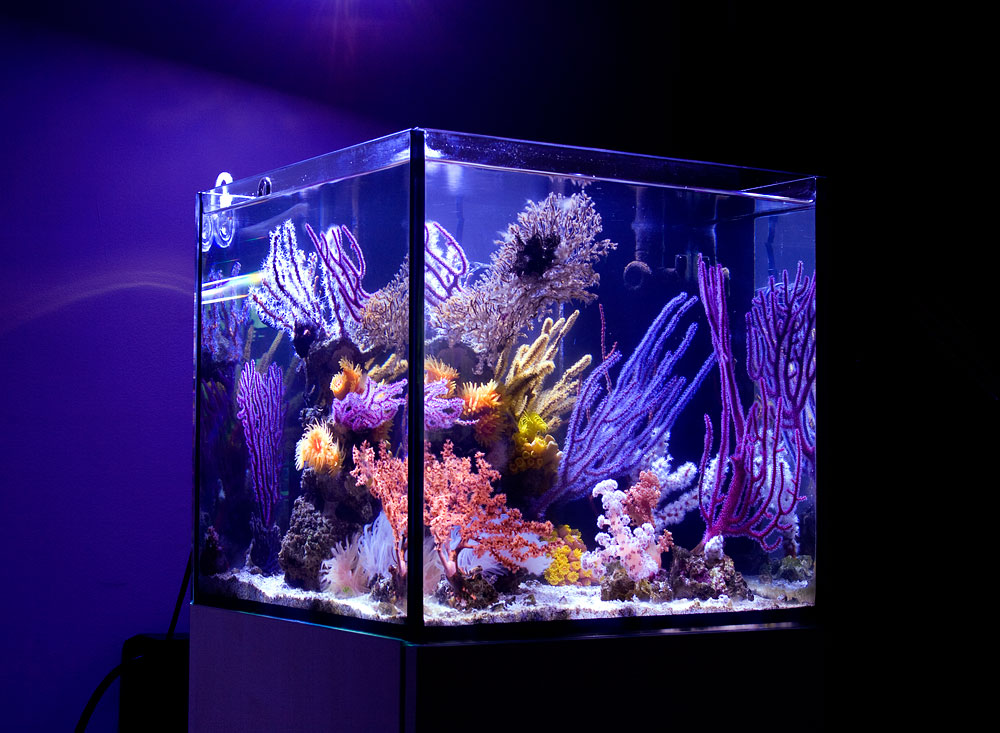 The small size of nano aquariums makes them perfect for testing out creative new ideas. With nano systems, it’s possible to conceive, construct, tweak, and perfect in a relatively short amount of time. Seemingly overnight, the “Postmodern” nano system has arrived, powered by new technology, newer ideas, and the dreams of some very dedicated hobbyists. Systems that are created by people as unique and interesting as the aquariums themselves. Evolution has given way to revolution. These bold new systems open our minds, and challenge us to look at aquariums in a whole new way. Let’s look at 3 examples of nano systems that are changing the face of the hobby as we know it.
The small size of nano aquariums makes them perfect for testing out creative new ideas. With nano systems, it’s possible to conceive, construct, tweak, and perfect in a relatively short amount of time. Seemingly overnight, the “Postmodern” nano system has arrived, powered by new technology, newer ideas, and the dreams of some very dedicated hobbyists. Systems that are created by people as unique and interesting as the aquariums themselves. Evolution has given way to revolution. These bold new systems open our minds, and challenge us to look at aquariums in a whole new way. Let’s look at 3 examples of nano systems that are changing the face of the hobby as we know it.
Uhuru’s Non-Photosynthetic Nano
When we talk about developing nano systems that push the limits of contemporary aquarium practice, there are few more sure roads that you can take to get there than to create a 100% non-photosynthetic (“NP”) animal system. Mike Cao (who goes by the name “Uhuru” on the message boards) has embarked on such a journey, and has created a stunning aquarium that pretty much changes the playing field in the nano reef world.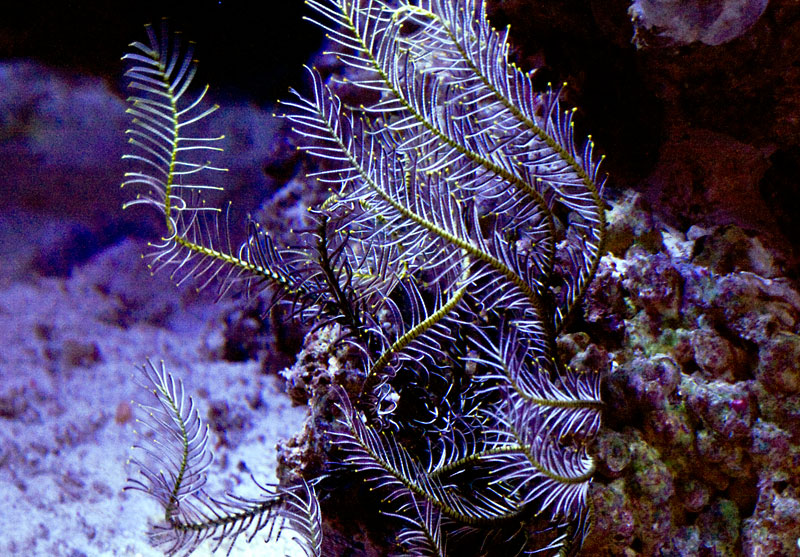
Using an off-the-shelf Elos Mini aquarium system, and then further outfitting it to meet the needs of his animals, Mike has demonstrated what is possible when you take an out-of-the-box product and mix it with outside-the-box thinking. Long a lover of non-photosynthetic animals, he carefully studied their requirements, and immersed himself in the world of possibilities that awaited the intrepid hobbyists who ventured into this realm. Mike’s plan was to create parameters that were perfect for these animals, and the flexibility of a nano system allowed for a lot of experimentation. He knew that he had the challenge of keeping large quantities of food in front of the animals, without creating a cesspool of organic waste- a very real possibility in a small system.
In order to maximize water quality, Mike incorporated a slightly oversized protein skimmer, as well as ozone. The ozone is injected at about 25 mg per hour, to maintain an ORP (oxidation reduction potential) level of 320 millivolts. Further nutrient export is accomplished through twice-weekly water changes of up to 25% of the aquarium’s capacity. In a nano system, these water changes have a great impact on water quality. Mike maintains that it’s a fine line between keeping water quality high and keeping the aquarium well fed, and the nutrient export mechanisms in his system are very well developed. Internal circulation is important to this aquarium, and is accomplished with a vortech MP10 pump, which provides “intelligent” water movement and varies the current pattern within the aquarium.
Since non-photosynthetic animals are not dependant upon light for their sustenance, the lighting in Mike’s system is purely for aesthetics. He incorporates a “Par 38” LED spotlight with a 20,000k color temperature. The added advantage of this type of lighting for a nano system is that it imparts little or no heat into the aquarium. And from an aesthetic standpoint, Mike is unencumbered by the need to use a specified color spectrum, which really creates unique opportunities to experiment with lighting effects in the aquarium.
One of the most important factors in creating a successful azooxanthellate system is providing sufficient quantities of food in a format that works for the animals, with a frequency that keeps them well feed for optimum health. Mike keeps this in mind with his feeding regimen. It’s a big commitment for a small aquarium! Utilizing syringe pumps, he has created a feeding regimen that includes continuous injection of small quantities of various liquid feeds. Frozen and live foods are administered manually. He feeds up to 10 times per day- some targeted at specific animals, and is very consistent with his feeding schedule. Mike is also experimenting with automated techniques to provide “surges” of foods at specified times, with a continuous moderate concentration of food.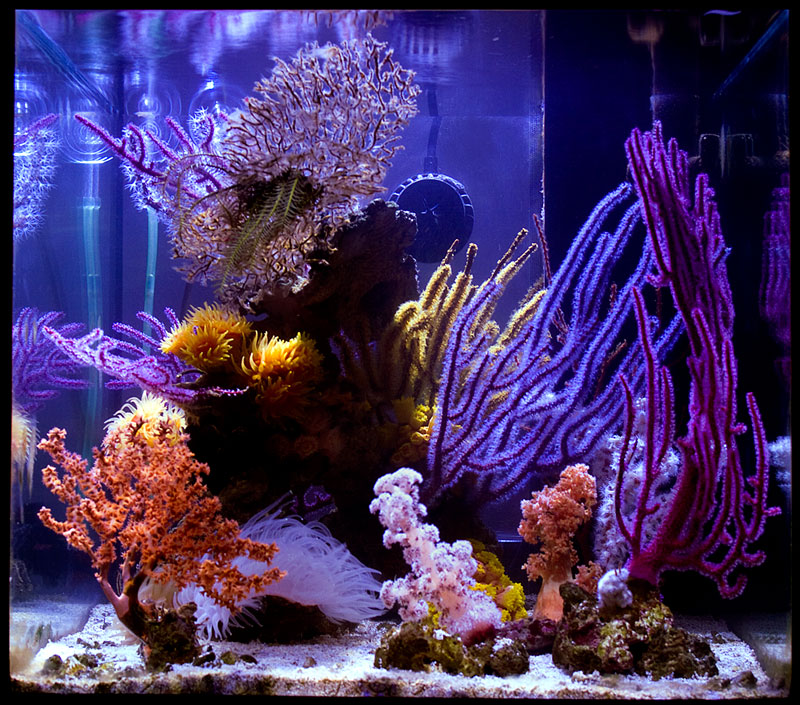
Livestock selection includes some amazing azooxanthellate coral and gorgonians, which are both beautiful and challenging to keep. Better-known NPS corals, such as Dendrophyllia , Tubastrea, and Scleronepthya, cohabitate with gorgonians such as Diodogorgia, to create a fascinating explosion of life and color. Lesser-known animals, such as Guaiagrogia, Swiftia, Rhizotrochus, and Balanophyliia species, help complete the amazing picture . The surprising additions of a Painted Anglerfish (Antennarius pictus), a Crinoid Feather Star, and an Australian Sea Apple complete the stocking list for this stunning aquarium.
Unique in almost any aquarium, incorporating these animals into a nano system is literally throwing boundries aside. Among the benefits of working with this smaller system is the opportunity for Mike to keep large amounts of food in front of the animals at all times, while keeping water quality high with frequent water changes. The “economies of scale” provided by the smaller water capacity make both of these tasks easier on many levels. This is a great example of a nano aquarium being the ideal system to serve as a test bed for new technologies and techniques, which can ultimately be “scaled up” to larger systems. In fact, the concepts learned on the nano enabled Mike to recreate this system in a 65 gallon aquarium.
EcoReef One
Aquarium “futurist” Jake Adams doesn’t just dabble in the hobby and watch it evolve. He taunts it- forcing the hobby to forge new directions. As Senior Editor of the cutting-edge website Reef Builders, Jake sees more new technology and ideas in a week than many of us do in a year. He’s not just an observer, though- he’s a practitioner of postmodern aquarium technique.
Jake felt that reef hobbyists spend the majority of their time and focus on seeing to the needs of live rock, sandbeds, copepods, invertebrates, etc., and a very small percentage of time and energy actually seeing to the needs of corals. Jake loves corals. He tasked himself with creating aquariums that were energy-efficient, clean, and perfectly suited to this philosophy that reef aquariums intended to grow coral should be focused on just the coral, sparing no effort or energy on anything else; the primary goal being their health and reproduction. His “reduced ecology” approach is fascinating.
“Eco Reef One” is an aquarium that, at least on the surface, reads like an example of what not to do! The aquarium utilizes no live sand, no live rock, minimal filtration, and no obsessing over “target” numbers for environmental parameters. By utilizing 100% water changes, ER1 becomes, in essence, a quasi-open system, relying on the fresh influx of synthetic seawater to provide all of the trace element replenishment required to grow corals. Jake notes that, in time, the established system began to behave in a very predictable fashion, much like a conventional reef system, without many of the drawbacks, however.
Porous live rock or sand were not employed, because Jake feels that these materials become a nutrient “trap,” accumulating substances that become just another impediment to coral growth. Jake feels that beneficial bacteria can colonize other materials with sufficient surface area and surface porosity- which, as he asserts , keeps the nutrients in the water column or “predictable places where they can easily be removed from the system””. In the Eco Reef methodology, Jake employs ceramic “rock”, or even slate tile, which provide the aforementioned surface porosity with none of what he feels are the disadvantages of gnarly live rock with its many deep nooks and crannies.
Filtration consists of a small, simple, internal filter filled with activated carbon, which provides enough mechanical and chemical filtration to do the job between water changes. As the majority of the biomass in these systems is coral tissue from specimens that are not purely heterotrophic, there is little accumulation of substances that can degrade the water quality and lead to nuisance algae growth. Jake feels that, in these tiny systems, good husbandry habits (mainly frequent small water changes) can create excellent water quality. In fact, better water quality than one could achieve with an inefficient, inadequately sized protein skimmer so common to other nano aquarium systems. Because the system is so small, the little internal filter provides sufficient water movement for its resident corals.
Lighting is provided by an array of low wattage, full-spectrum LEDs, which have not only the advantage of being energy efficient, but are incredibly appropriate for the corals being kept. The lighting is a standard 12 -hour photoperiod, with periods of higher light intensity during the day.
The aquarium is populated by a thriving community of stony corals, such as Diaseris, Scolymia, Plerogyra, Acanthastrea, Echinphyllia, and several others for good measure. Other residents include a pair of Harlequin Shrimp (Hymenocera picta). Later versions of this system include small gobies as well. The corals in this system are not just surviving- they are thriving, creating a colorful, healthy panorama of color that delights the senses. Some of the techniques and philosophies that are applied to this ground-breaking aquarium are being adapated to “scaled-up” aquarium systems as well, with very promising results thus far. Still another “concept nano” is Jake’s Eco Reef Zero, a system in which the only biomass in the aquarium is the coral itself. The bold philosophy of “everything you need- nothing that you don’t” proffered by the method is paying off, with a system that pushes the very boundries of modern aquaristics.
Hypes Archipelago
Hobbyist Eugene Weldon takes a novel approach to his nano system: he believes that you should overdo everything! Lots of filtration, lots of light, lots of feeding, and equipment and husbandry practices that can keep up with this approach to nano systems. His “more is more” approach defines what can be considered the prototype for the “upscale” nano system. Eugene is a lover of good aquascaping, and employs advanced technique to his small system, which sets it way apart from the more mundane “afterthought” approach to aquascaping that seems to be so pervasive in the nano aquarium world these days. His 22- gallon system challenges his fellow hobbyists to follow his lead to create a system that is by no means an “afterthought’!
Eugene is all about creating a system that is as beautiful as it is functional. He selected an aquarium with great dimensions (24″x 24″x9”), utilizing a very unique footprint for a nano system. This rimless, wide, low footprint, coupled with a stand that sets the aquarium for optimum visual enjoyment, creates an amazing viewing area. His aquarium is neat, uncluttered, and employs some tricks and techniques more commonly found on much larger systems to promote ease of maintenance, stability, and aesthetics.
For example, his system employs an 18 gallon sump- a huge percentage of the display aquarium’s capacity. Such a large sump/aquarium capacity ratio is a virtual recipe for stability, if for no other reason than the dilution offered by the water volume in the system. However, Eugene doesn’t just leave it at that. He employs an oversized skimmer, media reactor, ultraviolet sterilizer, and 1/15 horsepower chiller to provide further environmental stability. This little system is run just like one of the big guys- indeed, possibly more thoroughly equipped than most larger systems!
Water quality is of paramount importance to Eugene, and his system design is optimized to provide it. Like many of today’s hobbyists, Eugene likes to know what’s going on in his system at all times, so he employs an electronic controller to provide him with data and control of major system parameters. This “information-enabled” nano allows Eugene to create an optimum environment for his livestock at all times. Internal water movement is provided by two advanced vortech MP10 W pumps, which provide intelligent water movement for this little aquarium.
This aquarium can literally be described as a very well-equipped, scaled-down version of a state-of-the-art “full size” reef, with properly-rated components and operational protocols. That’s just one of the things that makes this system a game-changer: Applying large system approaches to a nano system is one of the keys to pushing the state of the art. To this end, Eugene employs reef capable lighting that is extremely robust- metal halide with 4 T5 florescent bulbs. He also has a supplemental LED strip for accent. Never one to sit still, Eugene is entertaining the use of an all -LED lighting format in the future.
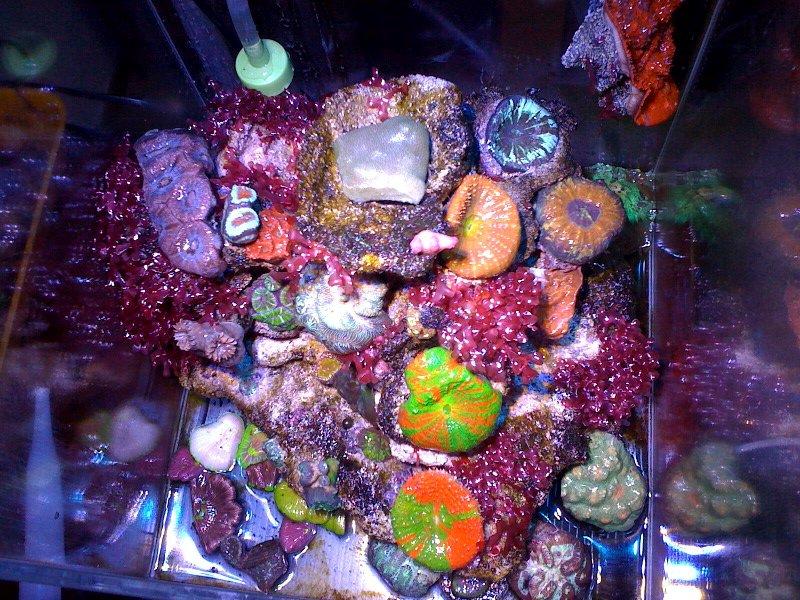
100% water changes are the norm for EcoReefOne; it goes without saying that temperature and salinity are closely matchedbeforethe water change begins.
The aquascaping in this system employs as much forethought as the rest of the system, with careful attention paid to rock configuration, coral placement, and proportion. An open, “no scape” approach was taken by Eugene. This minimalist approach uses very little rock, allowing the corals and invertebrates to be highlighted and to grow to their potential in an appropriate environment. Several aggregations of coral colonies, or individual coral colonies, provide all of the elements needed to provide an engaging aquascape.
In this shallow, wide system, much respect is paid to “negative space” in the aquascape- area not occupied by rock and coral. By cleverly employing this negative space, Eugene has created an aquascape that makes the aquarium look-and function- like a much larger system. With carefully managed flow, the system is as successful from a functionality standpoint as it is from an aesthetic one. It’s refreshing to see any aquarium- let alone a nano system- employ this beautiful combination of form and function.
Livestock selections are simple, yet engaging. The fish selection includes two species of peaceful damselfish, a couple of blennies, some gobies- and a Hippocampus reidi Seahorse. His coral selection consists of a simple mix of stony corals, the so-called “SPS” and “LPS” versions- as well as starfish, a Tridanca clam, and several small shrimp. Much to the viewer’s delight, the animals are dispersed throughout the aquarium, and do not give the “hyper crowded” look of a small system packed to the max with animals. By refraining from getting too crazy with a huge number of animals, Eugene’s system retains a sense of relaxation and order, which, in my opinion, is so sadly lacking in many aquariums these days.
Eugene regularly doses controlled amounts of two-part buffering solutions, and has employed an automatic water op-off system under the aquarium to compensate for evaporation in this small, fully-open-top aquarium. Weekly 5 -gallon water changes help ensure nutrient export and trace element replenishment for the livestock. Simple maintenance practices, done with regularity and frequency, are yet another key to success with this remarkable little system.
Hypes Archipelago stands out in the world of nano reef aquariums as much for what it doesn’t do as it stands apart for what it does. It’s a clean, well-thought-out system, with a great amount of attention and care provided to creating a flexible, optimized system for a wide variety of animals. There are no concessions to size. The system provides life support, nutrient export mechanisms, and aquascaping that are more than appropriate to provide a near perfect environment for the life forms it holds. It’s a game-changer because it dares fly in the face of an “adequately-thought-out” nano system, and offers an amazingly well thought out one instead.
Changing the Game
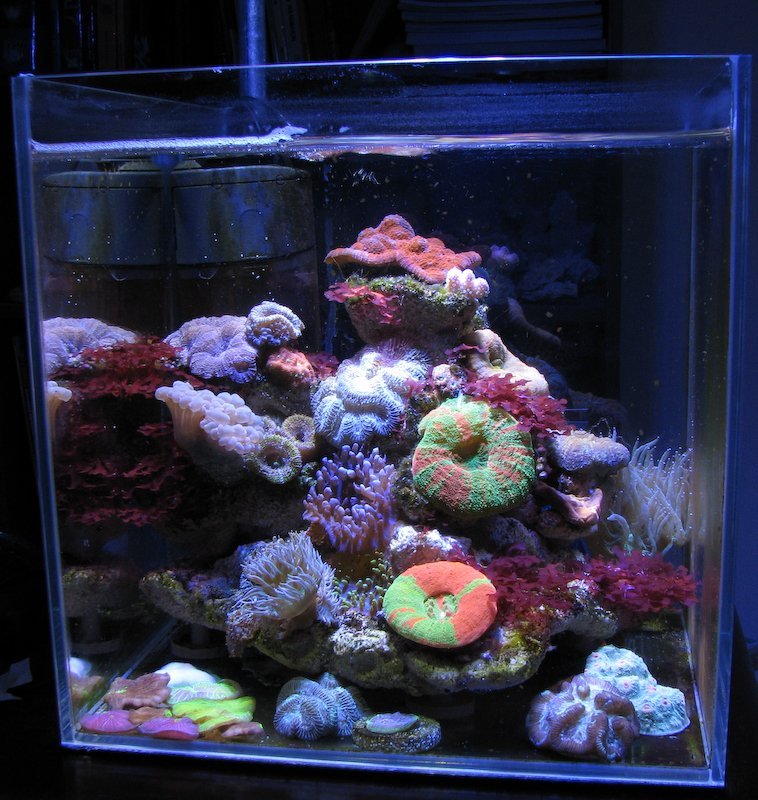
A week after water change this little reef stays very clear through the use of a small amount of activated carbon.
Small in stature, yet big in impact, these are but a few examples of the wealth of potential offered by the wonderful marriage of the “Postmodern” nano aquarium and the creative hobbyist. The aquarium world is being re-invented daily, thanks to this union. With their manageable size, more economical operating costs than their larger brethren, and the ability for the hobbyist to easily and quickly make corrections, enhancements, and improvements, these aquariums are not just excellent tools for helping develop and perfect new concepts and techniques. They are, in and of themselves, fascinating and engrossing systems. Coupled with the skill of some special hobbyists, these aquariums offer a glimpse of the future, and deliver on their original promise of taking us to new places in the hobby.
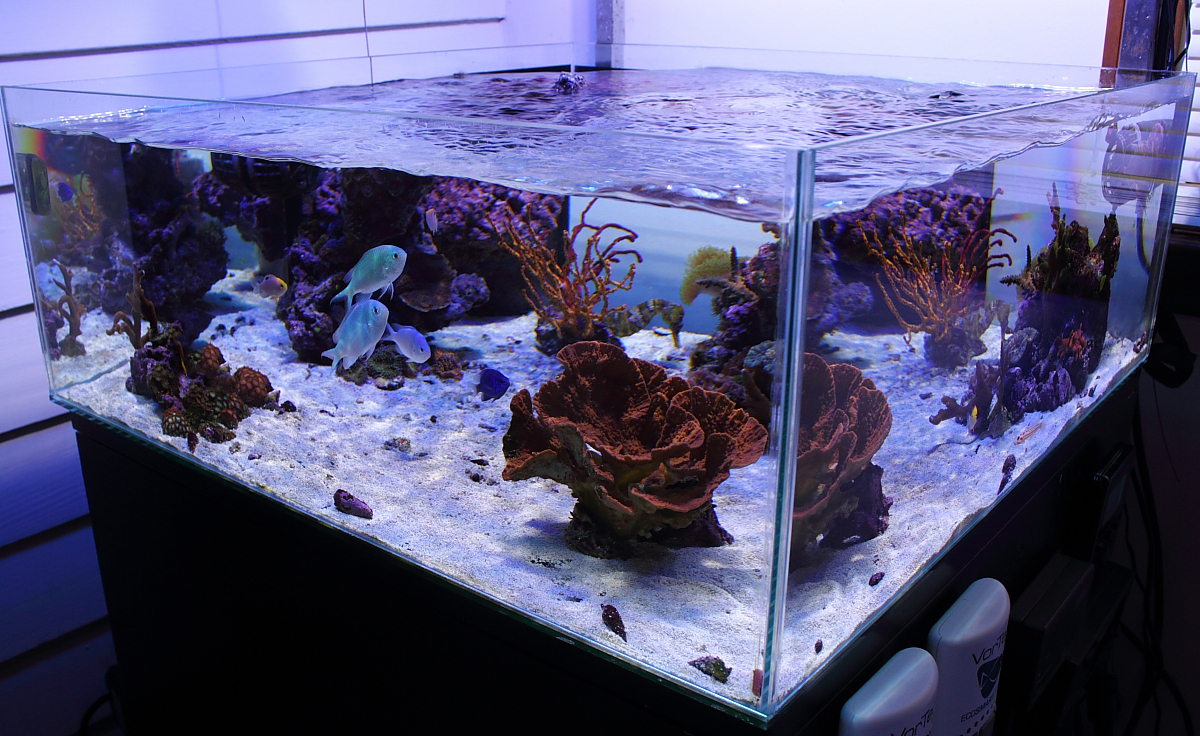


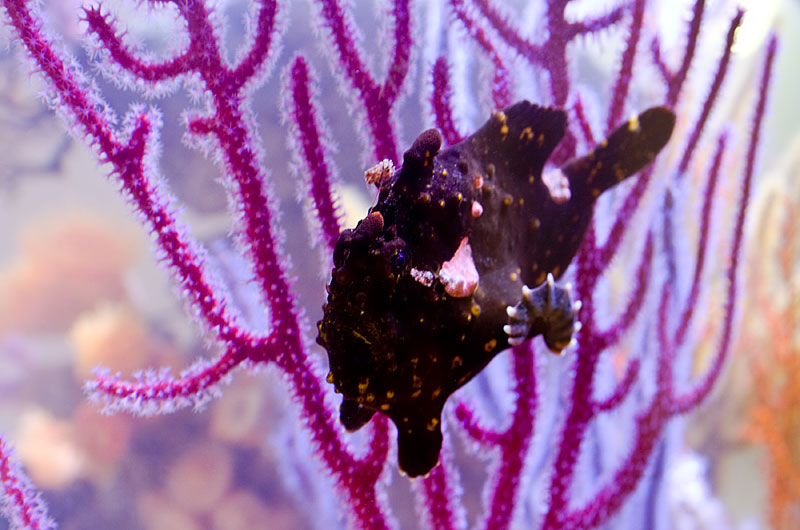

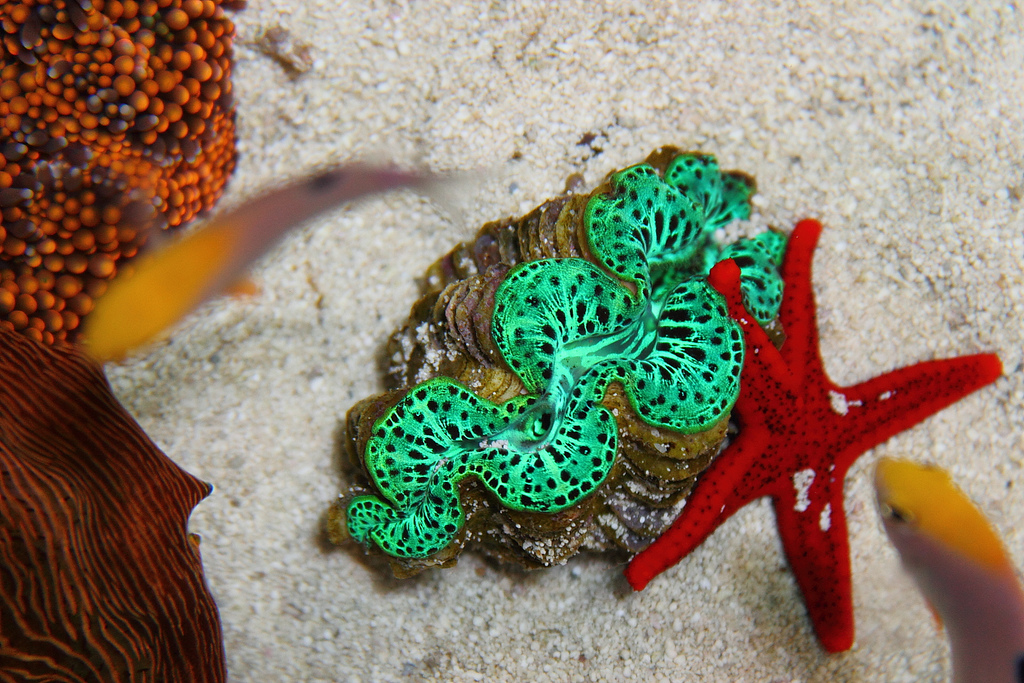
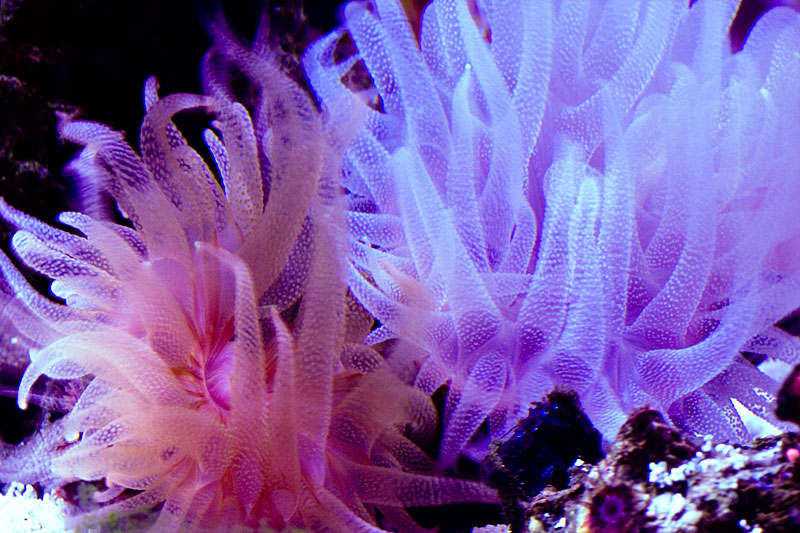
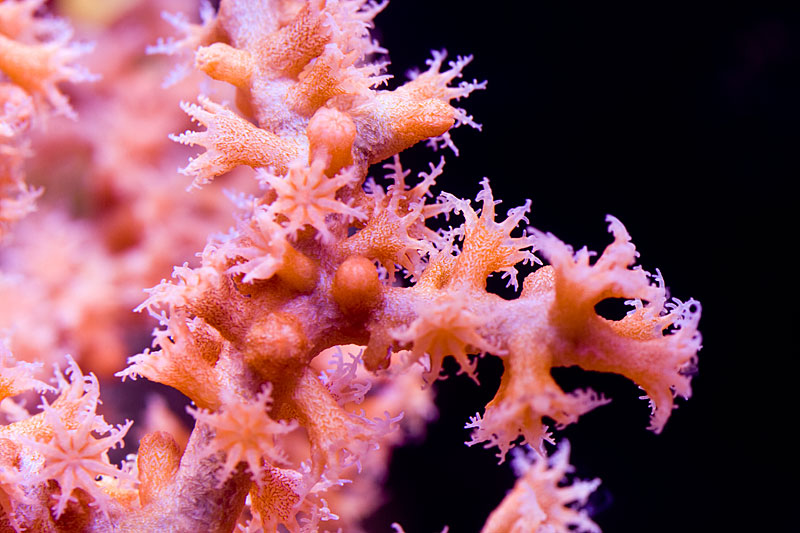
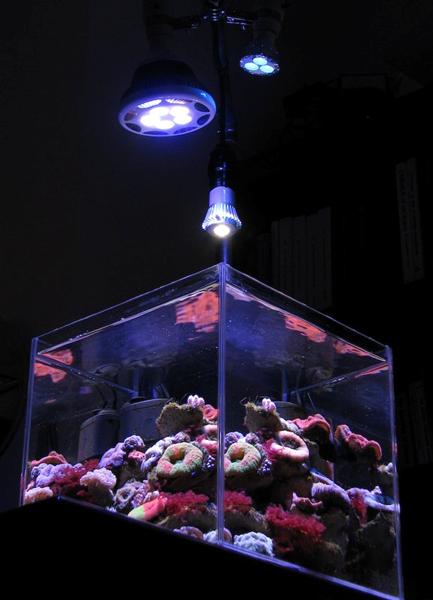

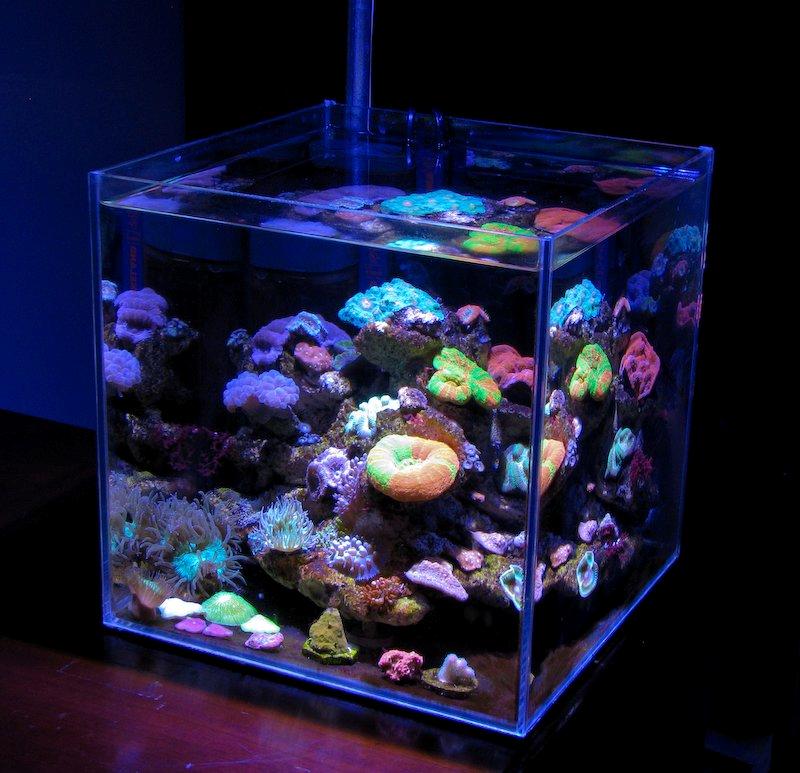


0 Comments